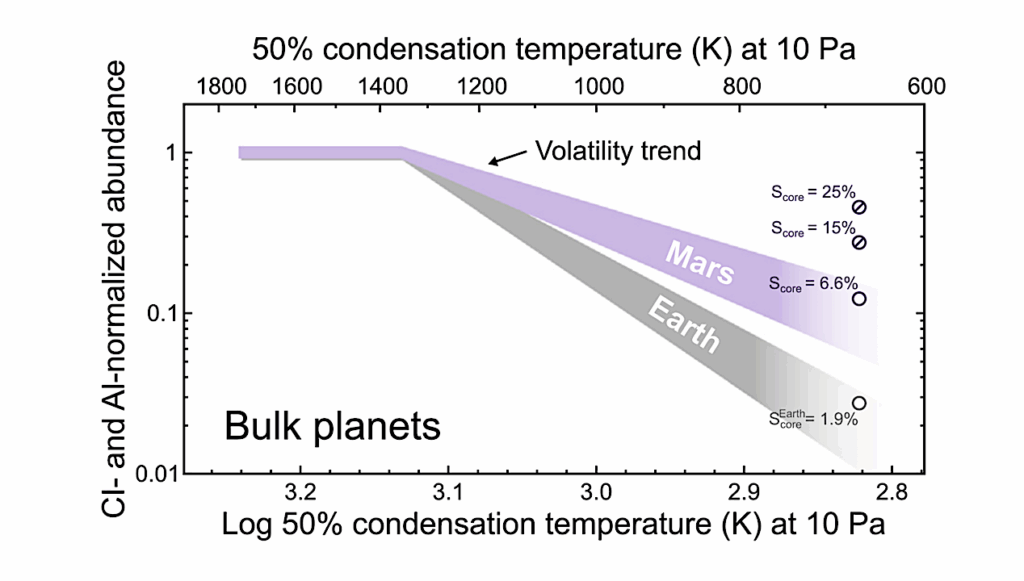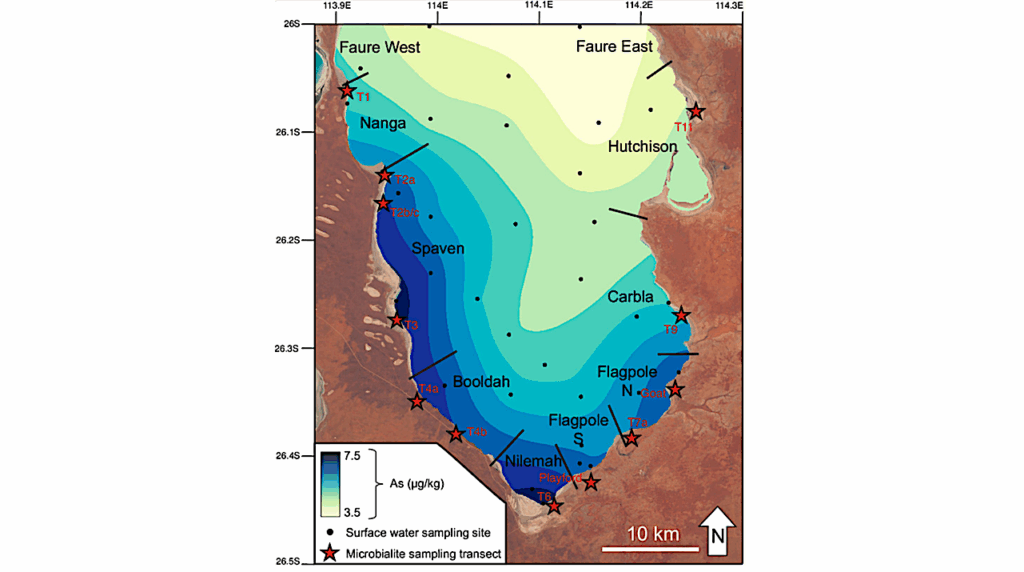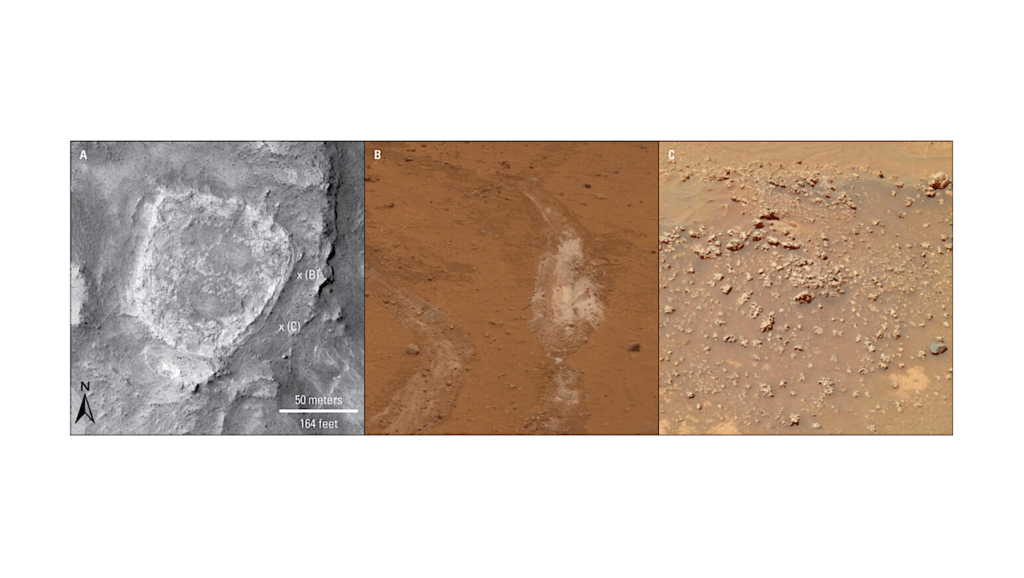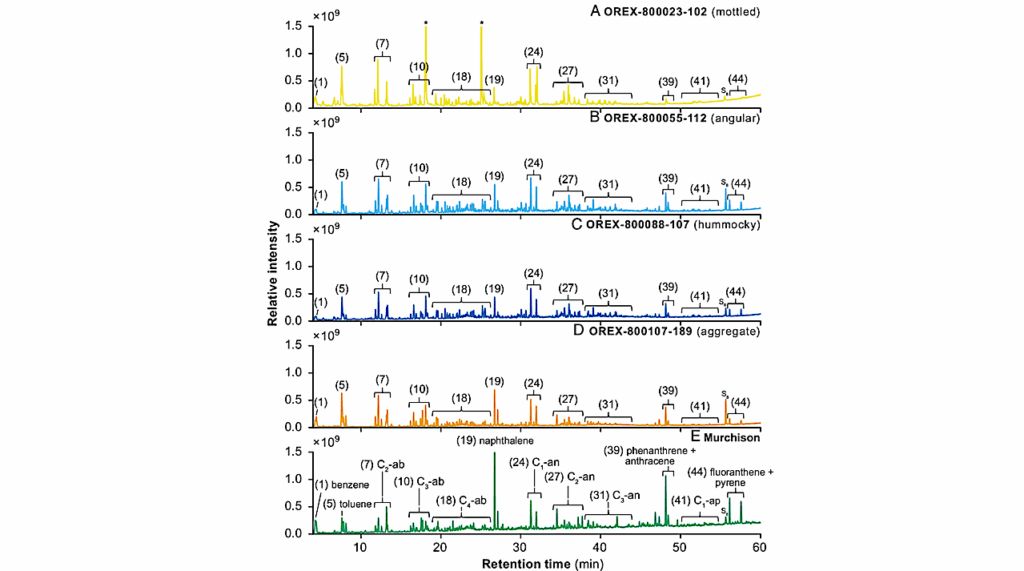Stability Distillation Hypothesis For The Origin Of Life

The essence of life is a frequency distribution conversion process of molecules accompanied by changes in information.
In wet-dry cycling hot springs, RNA of different sequences continuously undergoes polymerization and decomposition reactions, products with stable configurations will accumulate their frequency among all RNA molecules and finally become an important source of DNA coding and non-coding regions in primitive cells. This periodic extreme environmental change narrows the frequency distribution of macromolecules through the distillation process and new potential catalysts are searched.
When enough macromolecules are accumulated and reliable reaction pathways are built, phospholipids randomly wrap the macromolecules in the hot springs which I would call it the pioneer pools, and these protocells become parallel calculators of molecule frequency distribution.
Through the selective permeability of the cell membrane to different molecular weights and properties, cells with appropriate distribution have more opportunities to absorb small molecule substances and increase its intracellular frequencies of molecules. This will strongly induce the occurrence of macromolecules that can widely catalyze the synthesis of other macromolecules or themselves, such as ribosomes, etc.
Rupture and fusion during cell division make all protocells share the same frequency distribution of molecules during the origin of life, thus ensuring that all present cells have very similar genetic materials and protein translation systems. This also suggests that viruses may have originated and evolved together with cells.
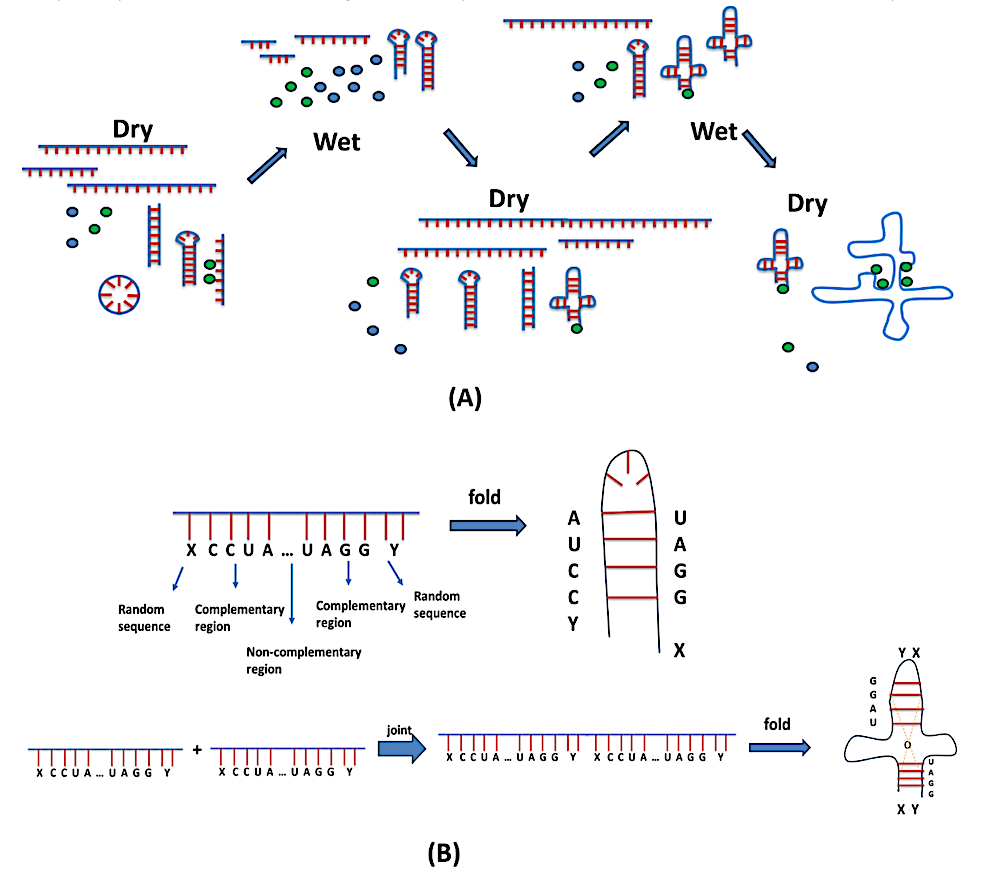
(A) the green circles represent amino acids and proteins, and the blue circles represent small molecules of RNA and nucleotides. During the wet-dry cycle, RNA with an unstable structure will continue to decompose and the frequencies of RNA molecules with stable structures increase. The continuous accumulation of related substrates increases the frequency of macromolecules with stable structures, while proteins, amino acids and other RNA molecules with complementary sequences can help stabilize their structures. (B) When two RNA molecules with complementary sequences are connected, they will form a tRNA-like structure, which will exhibit centrosymmetric properties. As the stabilities of these tRNA-like molecules with complementary base pairs of different sequences are still different, this may result in only a few types of tRNA-like molecules being retained [8]. There is evidence that tRNA may come from the assembly of two hairpin-like structures of RNA [15]. — q-bio.MN
Cheng Bi
Subjects: Biological Physics (physics.bio-ph); Molecular Networks (q-bio.MN)
Cite as: arXiv:2403.17072 [physics.bio-ph] (or arXiv:2403.17072v2 [physics.bio-ph] for this version)
https://doi.org/10.48550/arXiv.2403.17072
Focus to learn more
Submission history
From: Cheng Bi
[v1] Mon, 25 Mar 2024 18:05:00 UTC (780 KB)
[v2] Sat, 30 Mar 2024 21:30:36 UTC (786 KB)
https://arxiv.org/abs/2403.17072
Astrobiology



